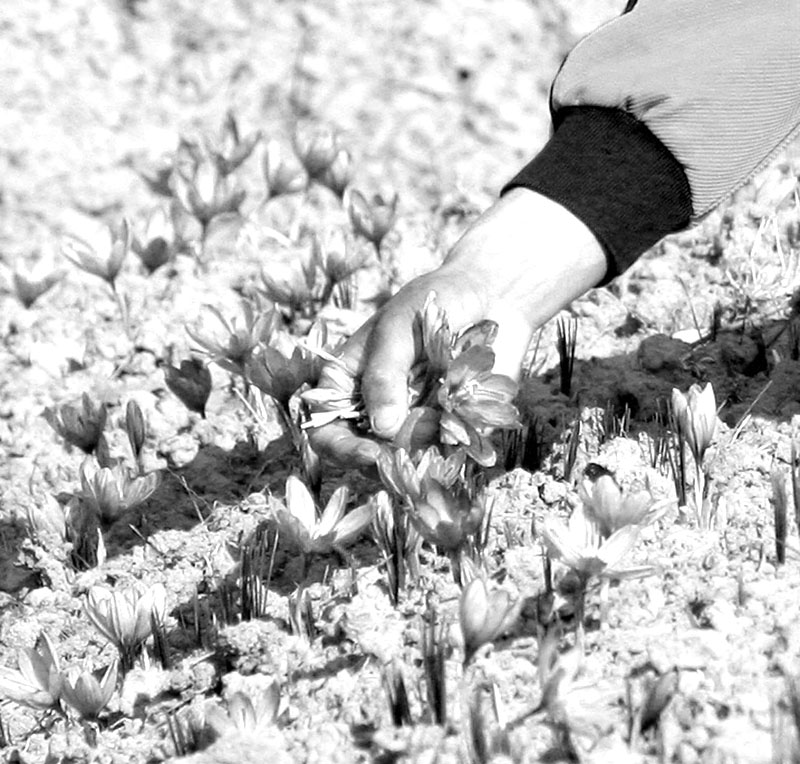FAROOQ AMIN
Kashir Saffron, an important cash crop, has a strong aroma and colour compared to its varieties grown elsewhere. Its stigmas are long, thick-headed and deep red in colour and thereby preferred by consumers worldover. Unfortunately this prized herb has been witnessing a steep fall over the past few years.
One Kanal of irrigable land that would yield more than half a kilogram of saffron a few years ago now yields 100 gm. The prices of saffron have also sky-rocketed this year with one kilogram being sold at 2.5 lakh rupees, ultimately telling upon its demand. Reasons for the downfall of saffron are many.
Adulteration by tradesmen: Adulteration has led not only to the falling prices, but has also cost Kashmir saffron its reputation. Inferior and cheap Iranian saffron is mixed with genuine Kashmiri saffron both by traders and growers, eventually damaging the demand.
Lack of proper irrigation: According to experts, scanty snowfall and rainfall is the major cause of saffron yield decline. Lesser rain and snow, over the years, has resulted in the drying up of various streams and other water bodies in the area.
Government apathy: Government is yet to introduce any innovative methods and technologies to boost saffron production. No guidance or facilities are provided to farmers while growers still employ age old inherited practises. Traders and cultivators also urge for a board that would check adulteration, regulate prices, and look into grievances. Though some research has been carried out by government run research institutions on saffron, there is dire need for full-fledged research cells exclusively for saffron cultivation. There should also be appropriate research conducted through the business administration departments for boosting sales.
Pollution: Pollution caused by harmful emissions from cement manufacturing units and stone crushers in areas close to the saffron belts are contributing to the decline in production.
Construction on saffron land: A large chunk of arable saffron land has been taken up for construction purposes. A bird’s eye view of the saffron cultivated land in Kashmir regions is blotched by patches of concrete. There is immense need to exercise a blanket ban on sale and purchase of such land. Grading and certification and fund scarcity: Besides, the saffron trade lacks grading Facilities and Central Testing and Certification facility. Certain projects in the pipeline stand non-executed due to shortage of funds for saffron cultivation, such as the fountain irrigation project.
There is also need to provide loans to the farmers for procurement of irrigation tanks and small tractors. It is high time that the authorities as well as the people who value economic sustenance wake up to the truth.
















